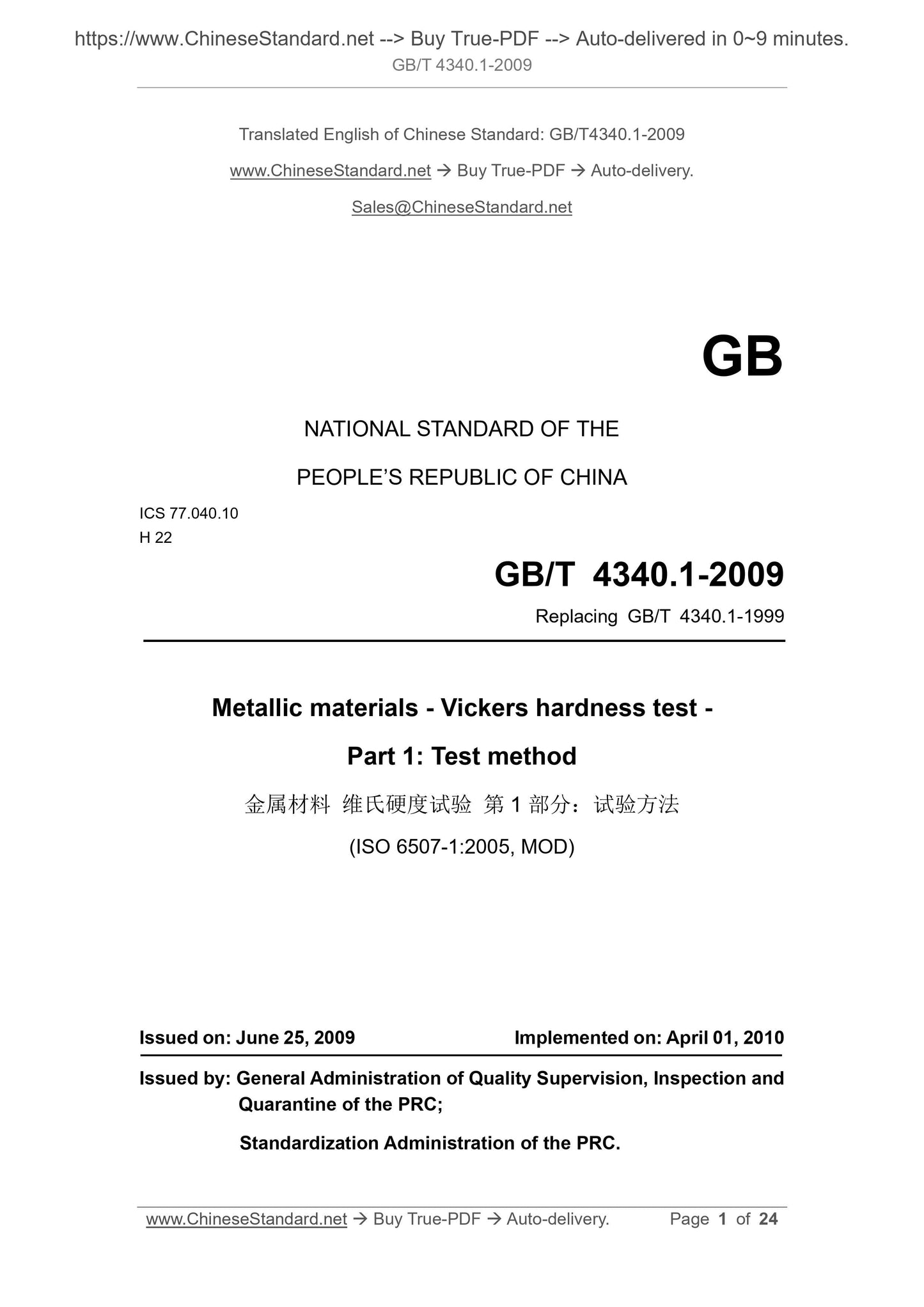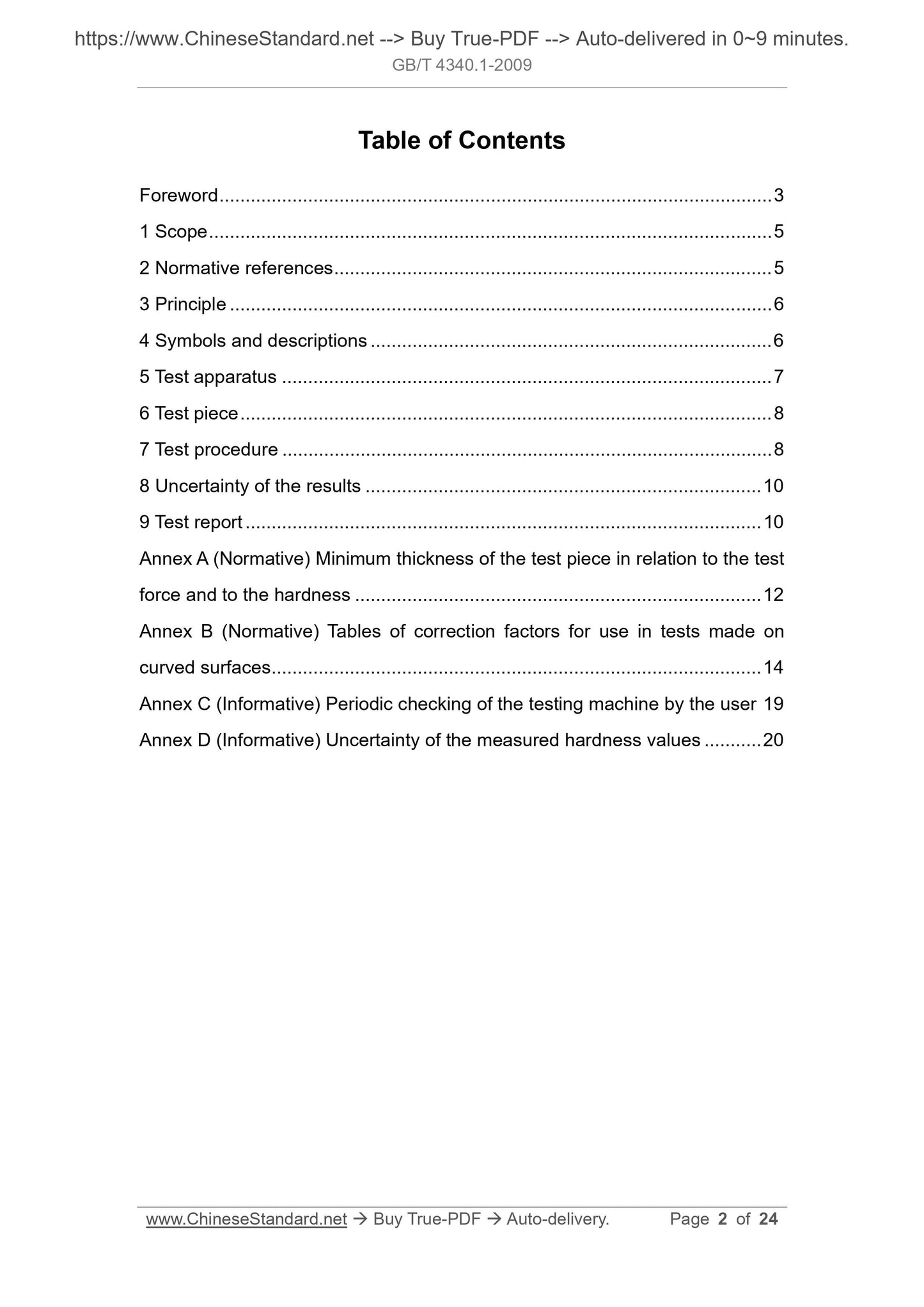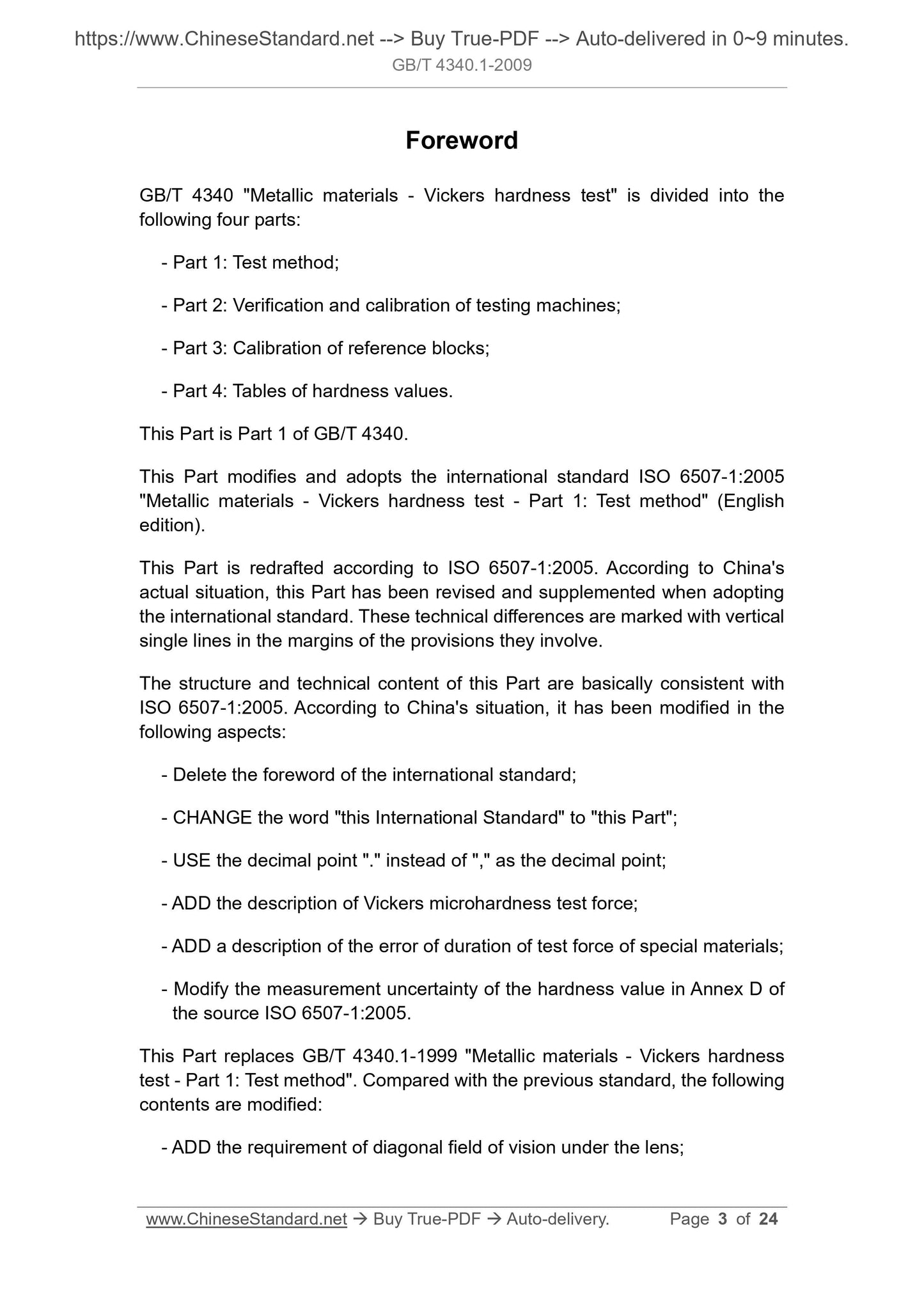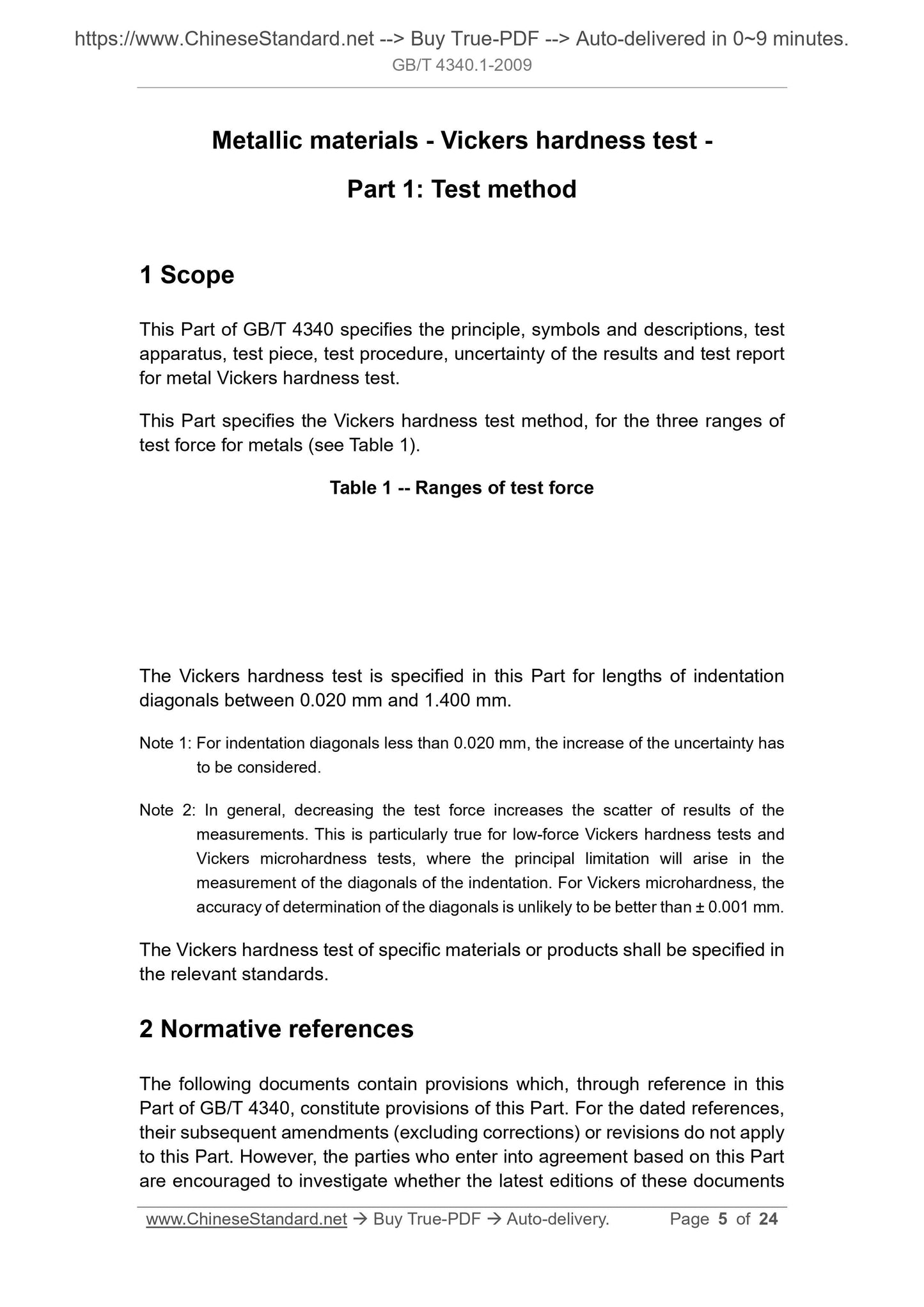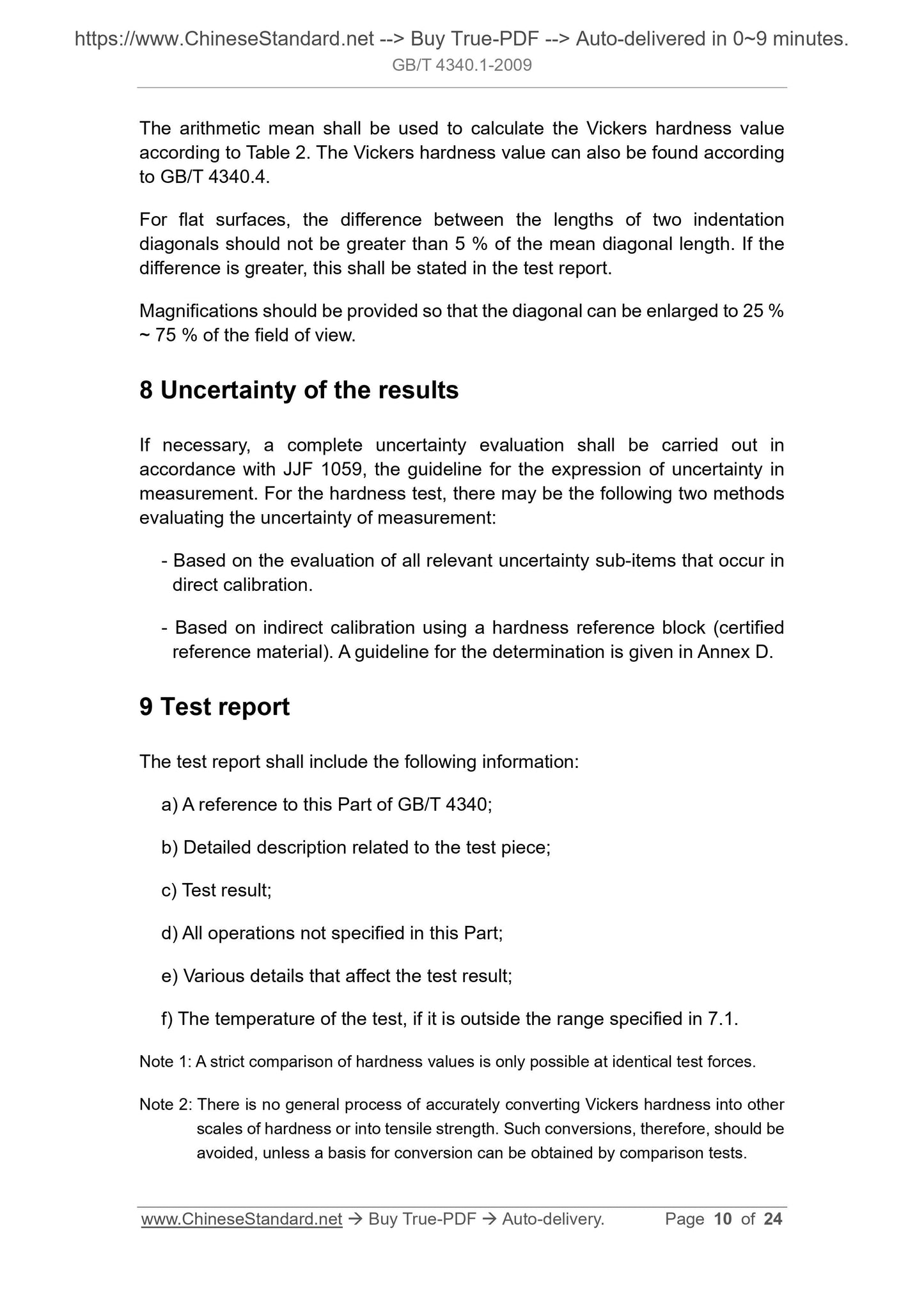1
/
of
5
www.ChineseStandard.us -- Field Test Asia Pte. Ltd.
GB/T 4340.1-2009 English PDF (GB/T4340.1-2009)
GB/T 4340.1-2009 English PDF (GB/T4340.1-2009)
Regular price
$105.00
Regular price
Sale price
$105.00
Unit price
/
per
Shipping calculated at checkout.
Couldn't load pickup availability
GB/T 4340.1-2009: Metallic materials -- Vickers hardness test -- Part 1: Test method
Delivery: 9 seconds. Download (and Email) true-PDF + Invoice.Get Quotation: Click GB/T 4340.1-2009 (Self-service in 1-minute)
Newer / historical versions: GB/T 4340.1-2009
Preview True-PDF
Scope
This Part of GB/T 4340 specifies the principle, symbols and descriptions, testapparatus, test piece, test procedure, uncertainty of the results and test report
for metal Vickers hardness test.
This Part specifies the Vickers hardness test method, for the three ranges of
test force for metals (see Table 1).
Table 1 -- Ranges of test force
The Vickers hardness test is specified in this Part for lengths of indentation
diagonals between 0.020 mm and 1.400 mm.
Note 1: For indentation diagonals less than 0.020 mm, the increase of the uncertainty has
to be considered.
Note 2: In general, decreasing the test force increases the scatter of results of the
measurements. This is particularly true for low-force Vickers hardness tests and
Vickers microhardness tests, where the principal limitation will arise in the
measurement of the diagonals of the indentation. For Vickers microhardness, the
accuracy of determination of the diagonals is unlikely to be better than ± 0.001 mm.
The Vickers hardness test of specific materials or products shall be specified in
the relevant standards.
Basic Data
| Standard ID | GB/T 4340.1-2009 (GB/T4340.1-2009) |
| Description (Translated English) | Metallic materials -- Vickers hardness test -- Part 1: Test method |
| Sector / Industry | National Standard (Recommended) |
| Classification of Chinese Standard | H22 |
| Classification of International Standard | 77.040.10 |
| Word Count Estimation | 18,186 |
| Date of Issue | 2009-06-25 |
| Date of Implementation | 2010-04-01 |
| Older Standard (superseded by this standard) | GB/T 4340.1-1999 |
| Quoted Standard | GB/T 4340.2; GB/T 4340.3; GB/T 4340.4; JJF 1059 |
| Adopted Standard | ISO 6507-1-2005, MOD |
| Regulation (derived from) | National Standard Approval Announcement 2009 No.9 (Total No.149) |
| Issuing agency(ies) | General Administration of Quality Supervision, Inspection and Quarantine of the People's Republic of China, Standardization Administration of the People's Republic of China |
| Summary | This standard specifies the principle of Vickers hardness test, symbol and description, test procedures, , uncertainty and report the results of the test specimen, test equipment. |
Share
